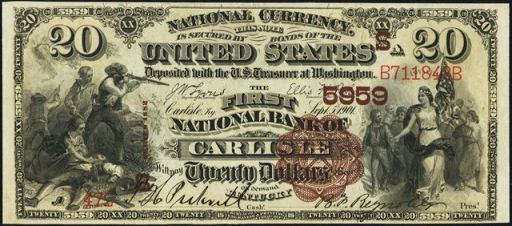Just as any career has its own jargon, so did the counterfeiting world and the Secret Service. Below are a few of the most important terms to know. Below that are a few fun facts about the Secret Service.

Secret Service and Counterfeiting Dictionary
- Boodle – notes bought from a production firmBoodle carrier – a courier who delivered counterfeit notes from the dealer to the shovers.
Chief Operative – first-class men assigned to the division’s major districts, each chief operative would have assistant operatives working under his direction, and would be responsible for all administrative and investigative activities within his district.
Dealers – people who bought the counterfeit notes from wholesalers and then used shovers to distribute the money into general circulation
Distribution – the spread of counterfeit money through an underground sales network
Engraver – the person who created the plates used to print money
Firm – the collective group of people used to print money
Issue – an edition of a set of counterfeit bills
Manufacturer – a person or group of people who printed counterfeit money
Network – the sum of one’s personal acquaintances (which included non-criminals).
Notes – another term for paper money
Operative – the official title of the Service’s employees
Plant – a term used to reference where counterfeiters made their money
Plates – metal pieces with copied images from the bill being counterfeited
Product – another name used for counterfeit money, generally used by the counterfeiters
Production Firm – the collective group of people used to print money
Queer – another term for counterfeit money
Retailer – another term for a dealer
Shover – a person who bought low priced items with a higher counterfeit bill to get real money back in change
Straw bail – a situation in which a false bondsman was contracted to swear they possessed sufficient property to pay the bond, and then the counterfeiter would subsequently fail to appear in court
Wholesalers – men or women who would buy counterfeit notes from manufacturers and then recruit potential customers through personal contacts or the mail to create a sales network
-
Fun Facts about the Secret Service
- D.C. was the Service’s bureaucratic headquarters and the chief lived there
- Between 1875 and 1910, the division never employed more than 47 men, and the average was only 25. 1878-1893, the average number of servicemen was well below that.
- Chief operatives often had several cases under investigation at once and had
 testy battles with headquarters over conflicting demands for economy and results
testy battles with headquarters over conflicting demands for economy and results - Each chief operative maintained a retinue of assistants and informers
- Each district contained a number of states and a single operative maintained a headquarter in a major city
- There were field offices in 11 cities across the nation.
- Operatives were paid once a month on a daily scale, an average of $7 per day.
- Each work day ranged from 12 to 16 hours long.
- There were no days off and any “vacation” time was unpaid.
- Operatives were required to itemize all their expenses for everything from travel to personal needs.
- Operatives were to maintain peak physical fitness, swear unquestioning obedience to chief’s directives
- In 1881, all toy money was removed from shelves and industries.
- While time-consuming, the work was not particularly dangerous (no Service employee was seriously hurt in the line of duty until the murder of an operative in 1908).

